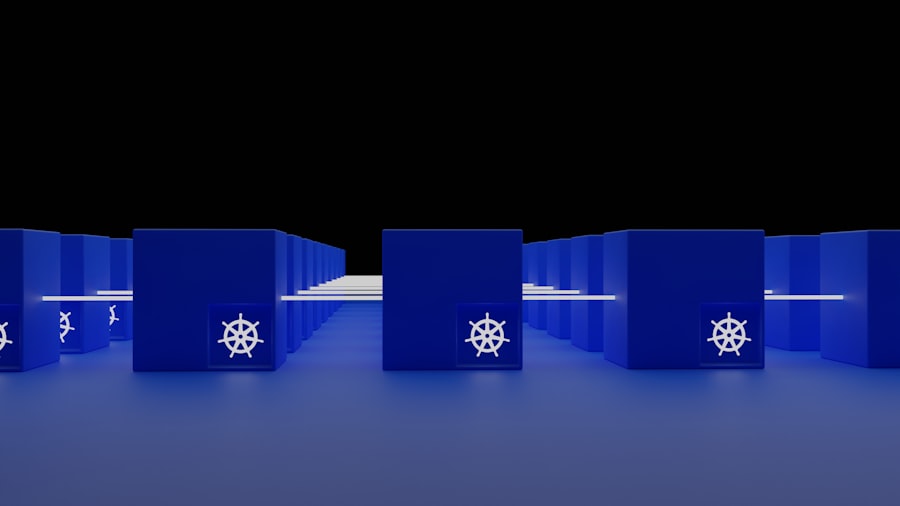In the rapidly evolving landscape of data management, the ability to navigate various database systems is crucial for developers, data scientists, and IT professionals. “Seven Databases in Seven Weeks” is an innovative approach that aims to provide a comprehensive overview of seven distinct database technologies within a concise timeframe. This methodology not only introduces learners to the fundamental concepts of each database but also emphasizes practical applications and hands-on experience.
By immersing oneself in this structured learning path, individuals can gain a robust understanding of how different databases operate, their unique features, and the scenarios in which they excel. The initiative is particularly beneficial in an era where data is often referred to as the new oil. Organizations are increasingly reliant on data-driven decision-making, necessitating a diverse toolkit of database solutions to meet varying needs.
From traditional relational databases to modern NoSQL systems, each database type offers distinct advantages and challenges. This article will delve into the nuances of these databases, exploring their functionalities, performance metrics, and ideal use cases, thereby equipping readers with the knowledge necessary to make informed choices in their database selection process.
Key Takeaways
- “Seven Databases in Seven Weeks” provides an overview of seven different databases and their unique features.
- The article explains the different types of databases, including relational, document-oriented, key-value, columnar, graph, time-series, and search databases.
- Each database’s features and capabilities are explored, highlighting their strengths and weaknesses.
- Performance and scalability of each database are compared to help readers understand which database suits their needs best.
- The article provides insights into the best use cases for each database, helping readers make informed decisions based on their specific requirements.
- Readers can gain hands-on experience with each database, allowing them to understand their functionality and usability.
- The conclusion helps readers choose the right database for their needs based on the information provided in the article.
Understanding the Different Types of Databases
Relational Databases
Relational databases, such as MySQL and PostgreSQL, utilize structured query language (SQL) for defining and manipulating data. They are built on a schema that dictates how data is organized into tables, rows, and columns. This structured approach allows for complex queries and transactions, making relational databases ideal for applications requiring data integrity and consistency. The ACID (Atomicity, Consistency, Isolation, Durability) properties inherent in these systems ensure that transactions are processed reliably.
Non-Relational Databases
Non-relational databases encompass a variety of models including document stores, key-value stores, column-family stores, and graph databases. Examples include MongoDB (a document store), Redis (a key-value store), Cassandra (a column-family store), and Neo4j (a graph database). These systems are designed to handle unstructured or semi-structured data and offer greater flexibility in terms of schema design.
Key Differences
Non-relational databases often prioritize scalability and performance over strict adherence to ACID properties, making them suitable for applications that require rapid development cycles and the ability to handle large volumes of diverse data.
Exploring the Features and Capabilities of Each Database

Each database technology comes with its own set of features that cater to specific requirements. For instance, MySQL is renowned for its reliability and ease of use, making it a popular choice for web applications. It supports a wide range of storage engines, allowing users to optimize performance based on their needs.
PostgreSQL, on the other hand, is celebrated for its advanced features such as support for JSON data types, full-text search capabilities, and extensibility through custom functions and data types. This makes PostgreSQL particularly appealing for applications that require complex queries or need to handle diverse data formats. In the realm of NoSQL databases, MongoDB stands out due to its document-oriented structure that allows developers to store data in JSON-like formats.
This flexibility enables rapid iteration during development and is particularly advantageous for applications with evolving data models. Redis excels in scenarios requiring high-speed data access and caching capabilities. Its in-memory data structure store allows for lightning-fast read and write operations, making it ideal for real-time analytics and session management.
Cassandra’s distributed architecture ensures high availability and fault tolerance across multiple nodes, making it suitable for applications that demand continuous uptime and scalability.
Comparing the Performance and Scalability of Each Database
Performance metrics can vary significantly between different database systems based on their architecture and design principles. Relational databases like MySQL and PostgreSQL typically excel in transactional performance due to their robust indexing capabilities and optimized query execution plans. However, as the volume of data grows or when faced with complex queries involving multiple joins, performance can degrade.
In contrast, NoSQL databases such as MongoDB and Cassandra are designed to scale horizontally by distributing data across multiple servers. This allows them to handle large datasets efficiently while maintaining high throughput. Scalability is another critical factor when evaluating database technologies.
MySQL can be scaled vertically by upgrading hardware resources; however, this approach has its limits. PostgreSQL offers some horizontal scaling options through partitioning and replication but may require more complex configurations compared to NoSQL solutions. MongoDB’s sharding feature allows it to distribute data across multiple servers seamlessly, enabling it to handle massive amounts of traffic without sacrificing performance.
Similarly, Cassandra’s architecture is inherently designed for scalability; it can accommodate increasing loads by simply adding more nodes to the cluster without downtime.
Learning the Best Use Cases for Each Database
Understanding the best use cases for each database type is essential for making informed decisions about which technology to implement in a given project.
For example, financial systems that manage accounts and transactions benefit from the ACID properties of relational databases, ensuring that all operations are completed successfully or rolled back entirely in case of errors.
Conversely, NoSQL databases shine in scenarios where flexibility and scalability are paramount. For instance, content management systems or social media platforms that handle vast amounts of unstructured data can leverage MongoDB’s document-oriented model to adapt quickly to changing requirements. Similarly, applications that require real-time analytics or caching can benefit from Redis’s high-speed performance.
In cases where relationships between entities are complex—such as social networks or recommendation engines—graph databases like Neo4j provide powerful querying capabilities that allow developers to traverse relationships efficiently.
Hands-On Experience with Each Database

Gaining hands-on experience with each database is crucial for solidifying theoretical knowledge and understanding practical applications. Many educational resources offer guided tutorials that allow learners to set up their own instances of these databases and experiment with various functionalities. For instance, setting up a MySQL database involves installing the software, creating tables, and executing SQL queries to manipulate data.
This foundational experience helps users grasp the relational model’s intricacies. Similarly, working with MongoDB involves creating collections and documents using its flexible schema design. Developers can practice inserting, updating, and querying documents using MongoDB’s rich query language.
Engaging with Redis can involve setting up a caching layer for a web application or implementing real-time features such as leaderboards or notifications. By actively working with these databases through projects or exercises, individuals can develop a deeper understanding of their strengths and limitations while also honing their skills in database management.
Choosing the Right Database for Your Needs
Selecting the appropriate database technology requires careful consideration of various factors including project requirements, expected data volume, performance needs, and team expertise. The diversity of database options available today means that there is no one-size-fits-all solution; rather, each project may necessitate a tailored approach based on its unique characteristics. By exploring seven different databases over seven weeks, individuals can equip themselves with a broad understanding of how each system operates within its context.
This knowledge empowers them to make informed decisions when faced with the challenge of choosing a database solution that aligns with their specific needs—whether it be for a small startup project or a large-scale enterprise application. Ultimately, the ability to navigate this complex landscape will enhance one’s capacity to leverage data effectively in an increasingly data-driven world.
If you’re interested in learning more about databases and data management, you may want to check out the article “Hello World” on com
This article could provide additional insights and information to complement the concepts discussed in “Seven Databases in Seven Weeks” by Eric Redmond and Jim R. Wilson.
FAQs
What is “Seven Databases in Seven Weeks” about?
“Seven Databases in Seven Weeks” is a book written by Eric Redmond and Jim R. Wilson that provides an overview of seven different databases, including relational, key-value, columnar, document, graph, time-series, and full-text search databases. The book aims to help readers understand the strengths and weaknesses of each database type and how to choose the right database for their specific needs.
What databases are covered in the book?
The book covers seven different types of databases: relational, key-value, columnar, document, graph, time-series, and full-text search databases. Each chapter of the book focuses on a different database type and provides hands-on exercises and examples to help readers gain practical experience with each database.
Who is the target audience for “Seven Databases in Seven Weeks”?
The book is targeted at developers, database administrators, and anyone interested in learning about different types of databases and their use cases. It is suitable for readers with some prior knowledge of databases and programming, as it provides hands-on exercises and examples to help readers understand the concepts.
What are the key takeaways from “Seven Databases in Seven Weeks”?
The key takeaways from the book include an understanding of the strengths and weaknesses of different database types, practical experience with each database through hands-on exercises, and guidance on how to choose the right database for specific use cases. The book also provides insights into emerging trends in database technology and how they can be applied in real-world scenarios.
Is “Seven Databases in Seven Weeks” suitable for beginners?
While the book assumes some prior knowledge of databases and programming, it is designed to be accessible to readers with varying levels of experience. The hands-on exercises and examples provided in the book can help beginners gain practical experience with different database types and understand the concepts presented.







